First off, I wince a bit at the notion of this unpublished project is a “failure” for many reasons, despite it being literally true. But because this was intended as a kind of back door sequel to my very first graphic novel, SUDDEN GRAVITY, and was expected to be completed and see publication, and it never did, it is safe to rest it in the categories of art misfires. However, it was a wholehearted success in so many other ways and probably the most influential piece of work no one ever saw, I would want you to get the idea it was a mistake or something I wish I could take back. Art is never a straight line and the pieces we make don’t always go where they are supposed to- especially when we leave them to find their own way. We can craft vast cities and still get lost and stuck in dead end alleyways. The real trick is recognizing those roadblocks, learning from them and planning better the next time.
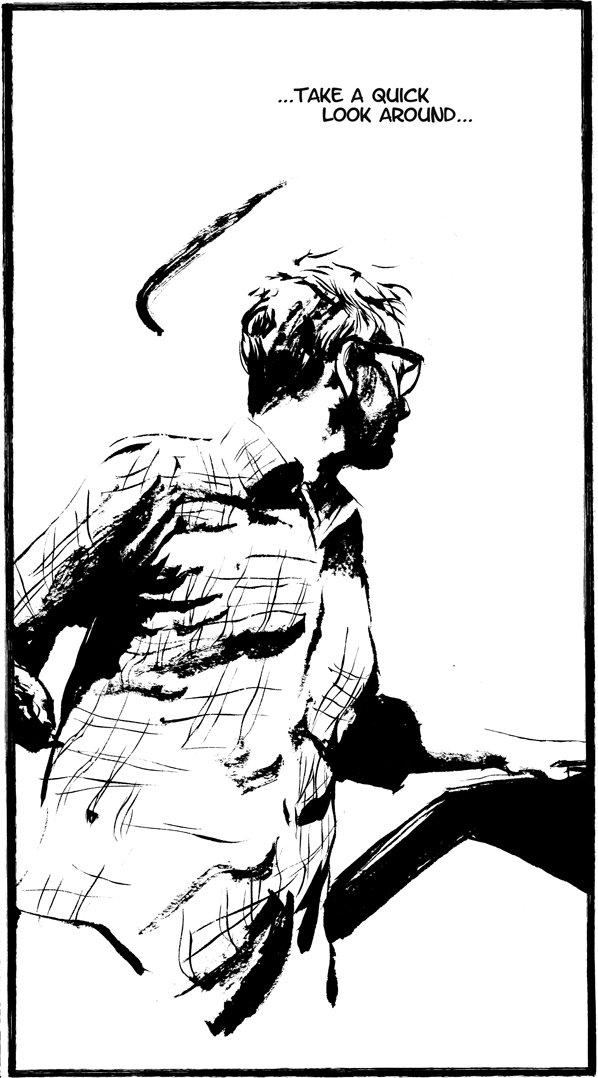 THE CALENDAR PRIEST was in many ways a book I wanted to write but felt more so one that I SHOULD write… and that was its first mistake. I had just finished hastily wrapping up SUDDEN GRAVITY as Caliber Comics faced its own closing down back in the early 1990’s. In the final volume I had in a desperate revolt against the ballpoint pen hospital melodrama I had wrought to my crampy hand’s great displeasure, I took two pages to indulge in sumi ink comics and loved it so much that I swore to myself eagerly to break every ballpoint pen I had and never again return to them in favor of this new, uncontrollable gentle swishy goodness that was brush and ink work. When I had first laid out Sudden Gravity, the arc of the story was to be at least 3 10-issue volumes covering the entire history of the Bentham Hospital’s birth and eventual destruction. Sudden Gravity told that story beginning from the middle-end, working backwards and then eventually forwards. For a guy who had never before made a comic work longer than six pages, this was beyond ambitious, but Caliber was so supportive and I think they would have let me run had they themselves had more road to run in front of them, (God bless Joe and Gary). So when its uncertain future became a certainty it had no future, I decided to pull out from that promise and steal away with a side story that was an origin tale of one of the hospital’s most important characters that was to come in after Dr. Auget’s incarceration, Dr. Milo Tulpa and how a lost wandering narcoleptic brought him out of hiding and escape a doomed town soon to be drowned in a new dam’s flood basin.
THE CALENDAR PRIEST was in many ways a book I wanted to write but felt more so one that I SHOULD write… and that was its first mistake. I had just finished hastily wrapping up SUDDEN GRAVITY as Caliber Comics faced its own closing down back in the early 1990’s. In the final volume I had in a desperate revolt against the ballpoint pen hospital melodrama I had wrought to my crampy hand’s great displeasure, I took two pages to indulge in sumi ink comics and loved it so much that I swore to myself eagerly to break every ballpoint pen I had and never again return to them in favor of this new, uncontrollable gentle swishy goodness that was brush and ink work. When I had first laid out Sudden Gravity, the arc of the story was to be at least 3 10-issue volumes covering the entire history of the Bentham Hospital’s birth and eventual destruction. Sudden Gravity told that story beginning from the middle-end, working backwards and then eventually forwards. For a guy who had never before made a comic work longer than six pages, this was beyond ambitious, but Caliber was so supportive and I think they would have let me run had they themselves had more road to run in front of them, (God bless Joe and Gary). So when its uncertain future became a certainty it had no future, I decided to pull out from that promise and steal away with a side story that was an origin tale of one of the hospital’s most important characters that was to come in after Dr. Auget’s incarceration, Dr. Milo Tulpa and how a lost wandering narcoleptic brought him out of hiding and escape a doomed town soon to be drowned in a new dam’s flood basin.
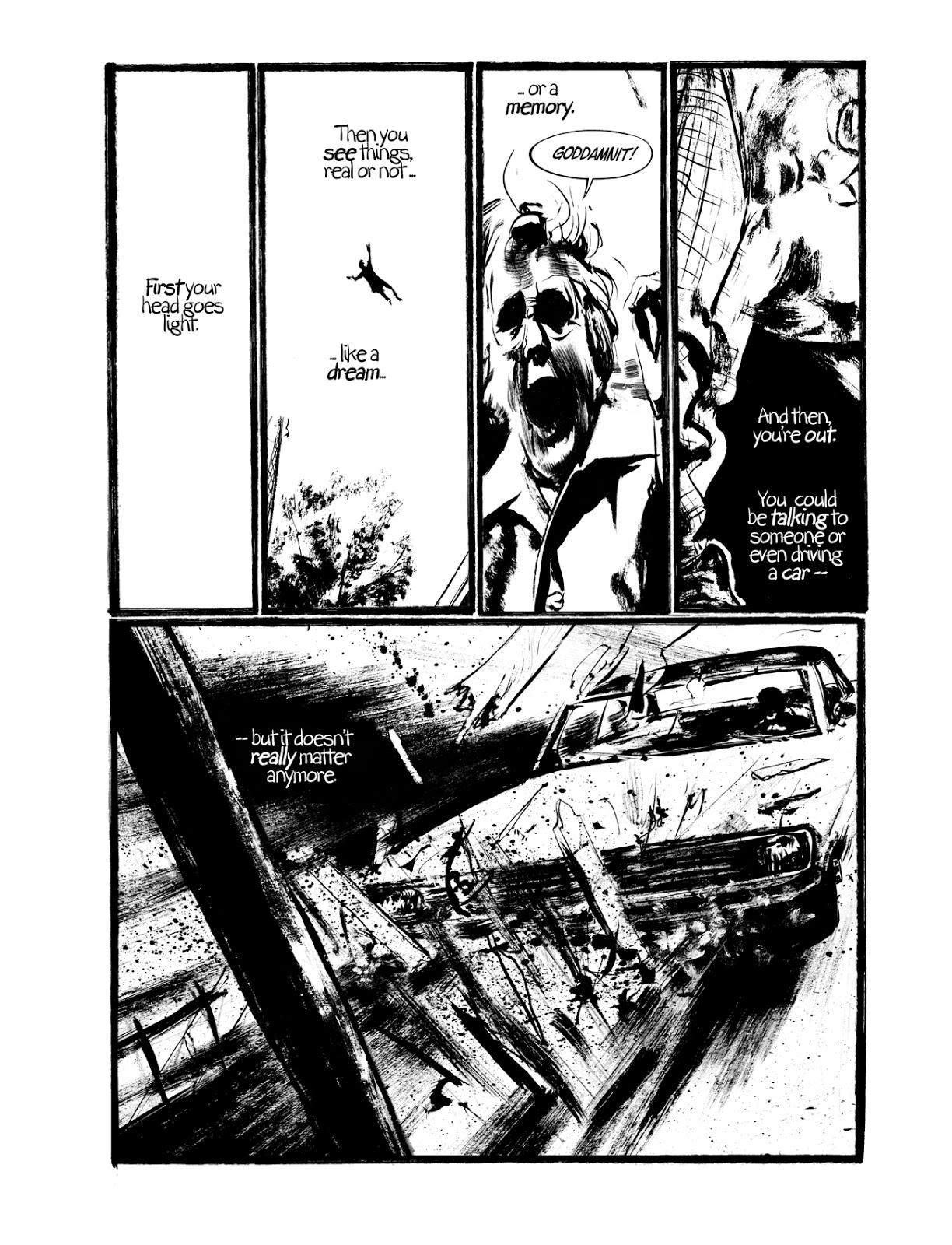 At the time as I was coming to grips with my own personal biography and sense of home town and what the past means and how it influences… I made one of the cardinal mistakes any artist can make: Art can be good therapy, but there is rarely good art when therapy is the engine of its creation.
At the time as I was coming to grips with my own personal biography and sense of home town and what the past means and how it influences… I made one of the cardinal mistakes any artist can make: Art can be good therapy, but there is rarely good art when therapy is the engine of its creation.
The Calendar Priest helped me reconcile some things within myself and my family life and the choices of direction we are poised to birth out of school as a young 20-something facing a new life in NYC in the 1990’s, and in that regard, the intent to publish it could be said to have been that first error. The thing about self indulging one’s own theraputic needs in art is the vanity that such a therapy is ever going to be interesting to anyone else. Sometimes it is and sometimes it can be, but largely the internal symbology and narrative pivot points though resonate with the artist, are rarely so foundational to the walk-a-by viewer of the art. An outside person can look on it now and see what I still consider to be some of my more successful comic art in play, but its a car with out an engine. And in being so committed one of the sins I swore to avoid in my career as a comics guy: not make beautiful, hollow bad comics that are basically luminous portfolios at the expense of their stories. Comics need and must succeed as stories first- they are after all, narratives before they are anything else and fealty to that reality must always be maintained. So working through my personal therapies in print didn’t really succeed in helping me fully resolve my issues, because I had not yet solved them in myself at the time to be able to provide the catharsis that would have made the story meaningful to others. I hadn’t yet learned that a storyteller needs to be both Dorothy AND the Wizard. (To see what I mean, go to HERE ). Its one thing for the reader to be taken on the journey- that’s the whole idea… but the author needs to be the captain of his own ship and not a passenger, which I was in this case. Inevitably, the ship ran aground and all hands were lost.
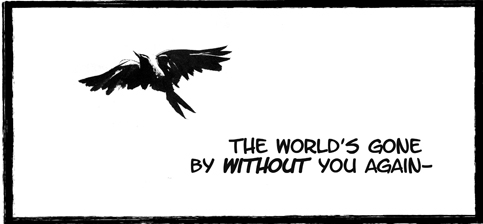 You have to remember it was the early 1990’s in NYC and the Alt Comics scene there was exploding. Chris Ware, Adrian Tomine, Dan Clowes were just bursting on to the scene and there was at the time an overall ethos of indulging in meandering a-structural comics that never really resolved as a point of pride. To this scene editors were anathema to art and single-creator comics were the pure form despite a parallel rise in some of the most influential mainstream comics to ever rise from the big two publishers. As in so many previous crowds I moved within, I found myself a bit on its fringes: I loved the self aggrandizing notion of the single creator and letting the story guide itself, but I loved what Alan Moore and Grant Morrison were doing in mainstream comics too. Like so many children of both worlds I belonged to neither and rose not much in station in either camp. The Calendar Priest was, now that I look at it today, a perfect expression of that schizoidal self. It tried to surf two boards at once instead of picking one to devote to, and the belly-flop was inevitable. I thought I was expressing the best of both worlds but really I ended up indulging in the worst of two.
You have to remember it was the early 1990’s in NYC and the Alt Comics scene there was exploding. Chris Ware, Adrian Tomine, Dan Clowes were just bursting on to the scene and there was at the time an overall ethos of indulging in meandering a-structural comics that never really resolved as a point of pride. To this scene editors were anathema to art and single-creator comics were the pure form despite a parallel rise in some of the most influential mainstream comics to ever rise from the big two publishers. As in so many previous crowds I moved within, I found myself a bit on its fringes: I loved the self aggrandizing notion of the single creator and letting the story guide itself, but I loved what Alan Moore and Grant Morrison were doing in mainstream comics too. Like so many children of both worlds I belonged to neither and rose not much in station in either camp. The Calendar Priest was, now that I look at it today, a perfect expression of that schizoidal self. It tried to surf two boards at once instead of picking one to devote to, and the belly-flop was inevitable. I thought I was expressing the best of both worlds but really I ended up indulging in the worst of two.
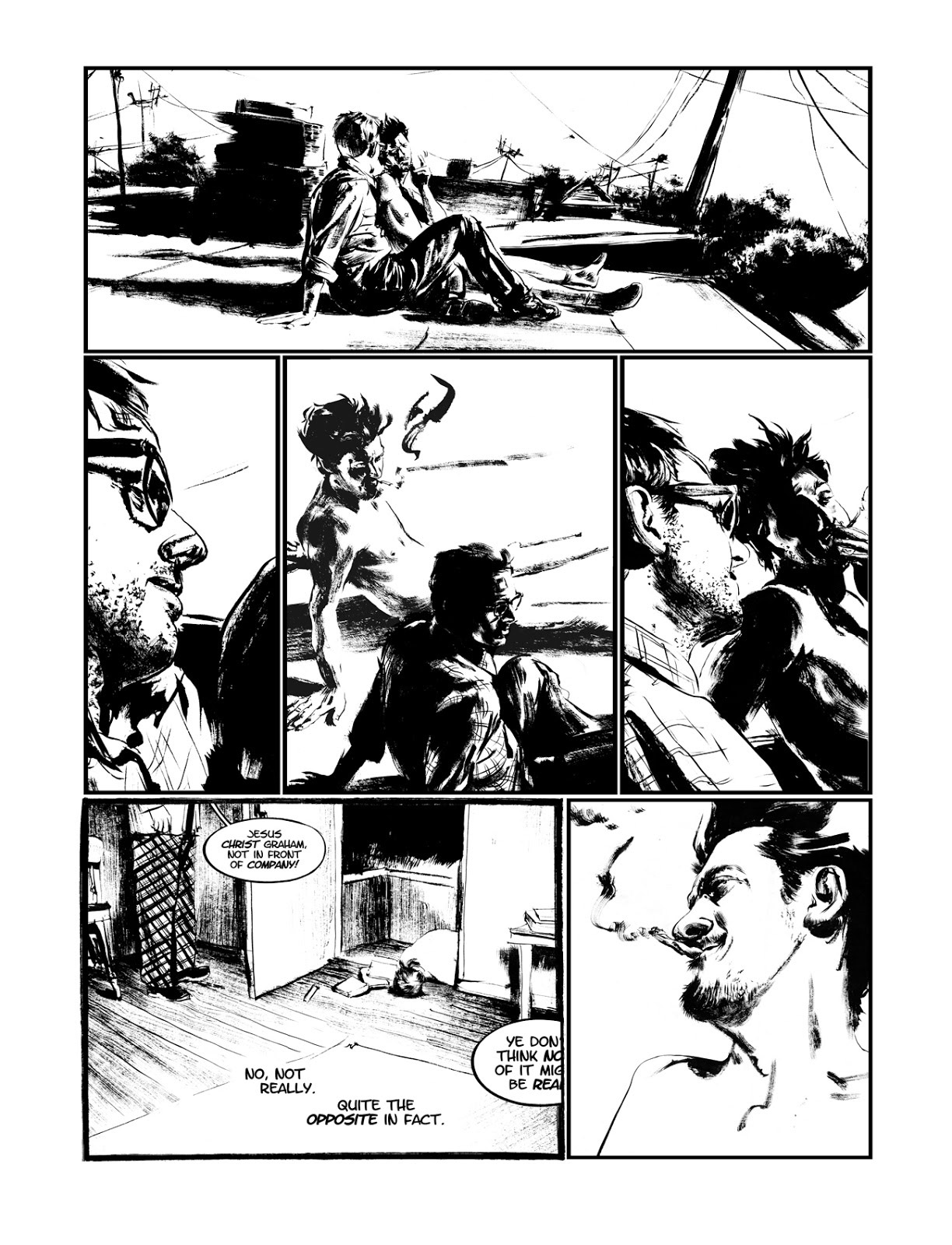 The plot and emotional arc of the tale was solid, and I still like it to this day: Graham, a lifelong narcoleptic, at a crisis point in his young adult life, abandoned his career to drive westward to his old hometown for the first time since running away from it as a teenager, just a week prior to it being submerged as a result of a new dam being built nearby. The town had been emptied, and it was his to wander alone before the flood came. While there he found the town wasn’t nearly as empty as he suspected, and The Prisoner like place was more or less ruled by a single dubious ruler of none in the form of a lanky shirtless goofball, named Milo Tulpa. (A bit on the nose with that name, I know, but what can I say? I was 24 years old and had my head firmly planted in my downspout). About 100 pages in is when I realized it wasn’t just going anyplace good… it wasn’t going anywhere at all.
The plot and emotional arc of the tale was solid, and I still like it to this day: Graham, a lifelong narcoleptic, at a crisis point in his young adult life, abandoned his career to drive westward to his old hometown for the first time since running away from it as a teenager, just a week prior to it being submerged as a result of a new dam being built nearby. The town had been emptied, and it was his to wander alone before the flood came. While there he found the town wasn’t nearly as empty as he suspected, and The Prisoner like place was more or less ruled by a single dubious ruler of none in the form of a lanky shirtless goofball, named Milo Tulpa. (A bit on the nose with that name, I know, but what can I say? I was 24 years old and had my head firmly planted in my downspout). About 100 pages in is when I realized it wasn’t just going anyplace good… it wasn’t going anywhere at all.
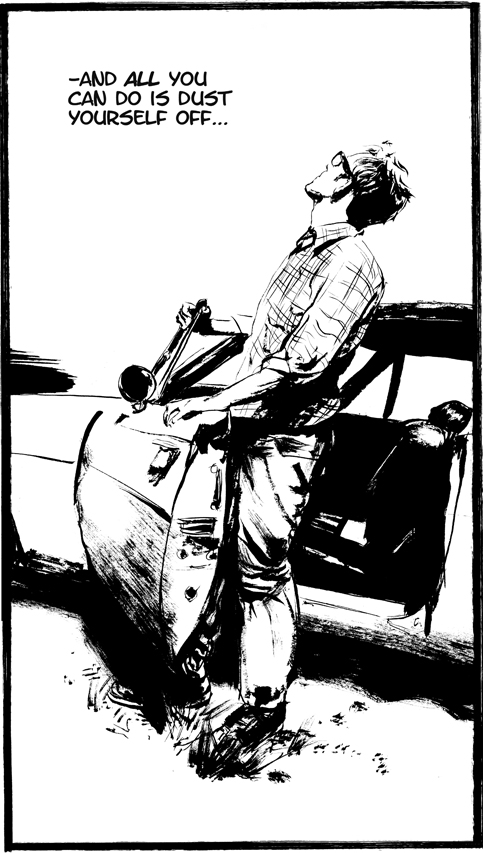 I had essentially created in overlong form a 100 page first act to a book I had intended to be only 150 pages. I was wallowing. Well story-wise I was, but artistically I was exploding. I was learning what the sumi ink could do, and I had very little control over it as compared to the almost digital control the ballpoint pen had provided. It was my first true comic done without making “proper comics pages” and doing larger individual drawings to be scanned and assembled later. Remember this was 1993-94 and there was no internet to speak of yet, we all still used fax machines to e-send art and proposal work, and my little crap scanner cost $600 back then and took almost 15 minutes to make a single full color scan as the thing had to make painfully slow passes for each color and black. I used to keep a book next to my old mac to keep myself occupied whilst I scanned art. I got a LOT of reading done. I was having a blast and felt a vigor and head of steam I had rarely known before. I sheet-rocked by day, and did this by night ( when I wasn’t doing Matrix Comics), and being in NYC at the time was like being master of a hurricane: hubris ran wild. I had the characters, I had a world for them to live in and I had some cool hooks… a man who constantly pivoted between waking and sleep, dream and reality, an abandoned town on the verge of a great flood, images of deep sea scuba suits sitting at suburban breakfast tables as fish swam past raised cups of coffee… but all of it was a dress with now wearer to give it a place to go. A car without an engine.
I had essentially created in overlong form a 100 page first act to a book I had intended to be only 150 pages. I was wallowing. Well story-wise I was, but artistically I was exploding. I was learning what the sumi ink could do, and I had very little control over it as compared to the almost digital control the ballpoint pen had provided. It was my first true comic done without making “proper comics pages” and doing larger individual drawings to be scanned and assembled later. Remember this was 1993-94 and there was no internet to speak of yet, we all still used fax machines to e-send art and proposal work, and my little crap scanner cost $600 back then and took almost 15 minutes to make a single full color scan as the thing had to make painfully slow passes for each color and black. I used to keep a book next to my old mac to keep myself occupied whilst I scanned art. I got a LOT of reading done. I was having a blast and felt a vigor and head of steam I had rarely known before. I sheet-rocked by day, and did this by night ( when I wasn’t doing Matrix Comics), and being in NYC at the time was like being master of a hurricane: hubris ran wild. I had the characters, I had a world for them to live in and I had some cool hooks… a man who constantly pivoted between waking and sleep, dream and reality, an abandoned town on the verge of a great flood, images of deep sea scuba suits sitting at suburban breakfast tables as fish swam past raised cups of coffee… but all of it was a dress with now wearer to give it a place to go. A car without an engine.
Once I hit the triple digit page count and realized I had two choices: edit the shit out of what I had done, rewrite the script before continuing. Or continue onward for however long it took, burning through however many more pages it would take to get there and hope it made some kind of sense later. Lucky for me, my work life outside of home-repair in Brooklyn began to take off and the migration of making art as an after-work hobby started to become the work I came home from. Freaks of the Heartland came rolling in, My wife and I were expecting our first child and we had committed the sin i swore never to indulge in while living in NYC: paying more for less apartment. So we moved up to the countryside here in Western Mass and here I remain today.
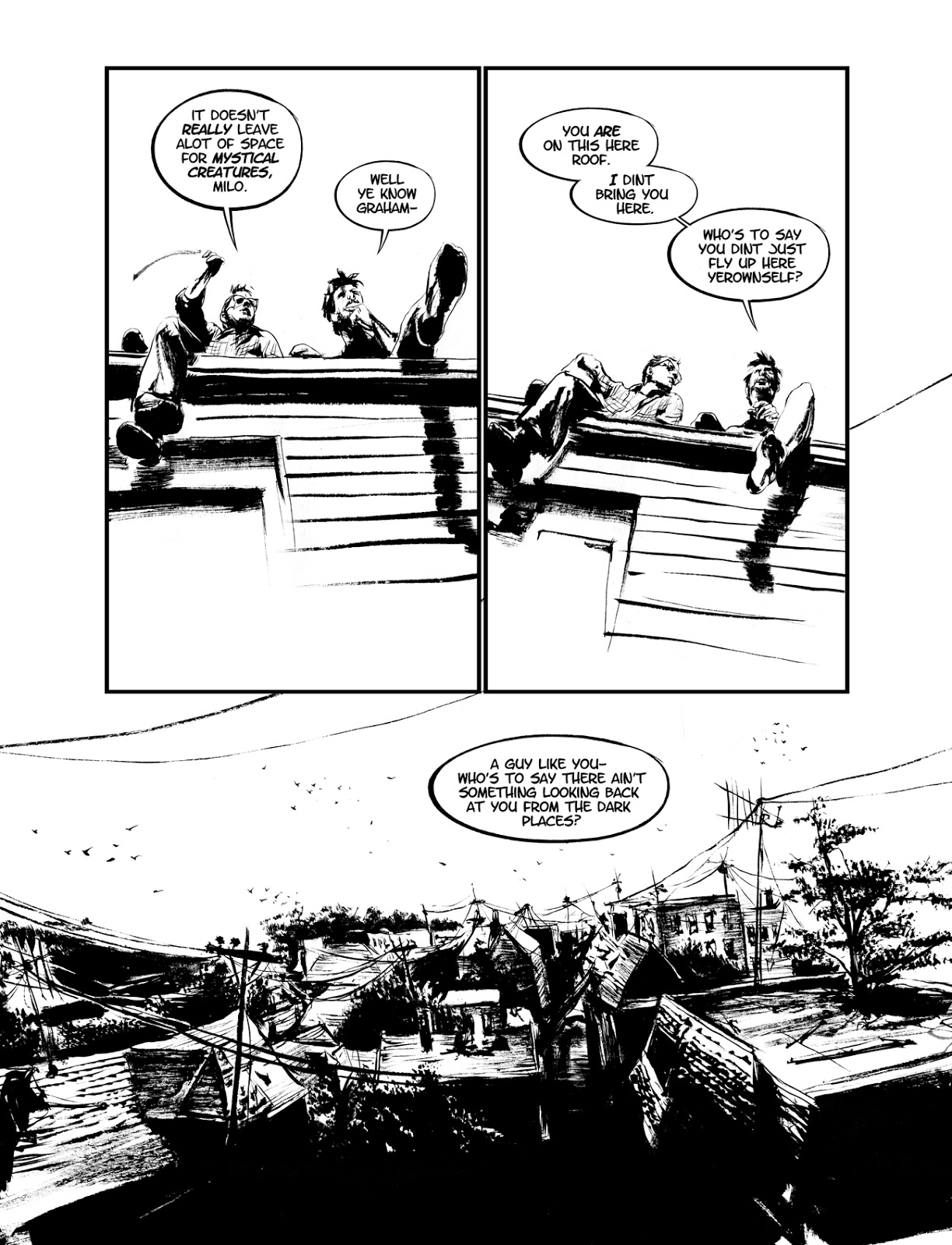 The Calendar Priest still sits in my drawers and over the years I have indulged the fantasy that one day i would do it right and well. but the style of art isn’t really the kind of sumi drawing I’m doing these days and retrofitting all that original work would be a herculean task unto itself. It may have constituted 500-800 drawings that never made a story but it birthed a decades long career in sumi ink work I am today most known for. it taught me that comics were stories before art and it made me realize that one’s personal therapies need not be suffered by others as if they were as important. I had decided to make and write a comic while writing and making it and inevitably it led me over a cliff I couldn’t bridge fast enough to save myself.And like most lessons in life, the failures are where the most learning happens. I still look on it as one, but one that gave rise to so many other successes I don’t entirely think it;s fair to see it as a total loss. Not by miles. I think there’s less involved ways to learn this lesson- i hope this case serves as a warning to you who are reading this to avoid such a gigantic epic sink hole like the one I fell into, but that even if you do.. it’s possible to climb out. Realizing you don’t know as much as you think it one of the most repeated and ongoing revelations you’ll ever experience in the whole of your life, but like all such moments in the fabric of our time here, it cannot be and should never be dismissed or excised for it may have been an integral part of the success of the piece. The Calendar Priest was about wrestling with regret and taking responsibility and it taught me that responsibility takes many forms and regret is a bullshit way to look at your life and the life of your art. That the misfires and mistakes are to be remembered, not dismissed, and that even in the most epic of failures one can find new shoots of growth and new ways of working that can give rise to whole and better worlds. We may not be the sum total of our mistakes, but we are their children. Like all children who carry their parent’s legacies, it;’s up to us to improve upon them, learn the lessons and make a better world for our own to live in and then do the same to us. Without The Calendar Priest there would have been no RETURN OF THE PRODIGAL SON, LOST BOY or INDEH… Art is an act of persistent death and rebirth. Like the handsome surfer says to Annette Funacello in “Beach Blanket Bingo”, “When you surf, you surf the ocean and not just the wave you’re on. Anything else will get you wet”.
The Calendar Priest still sits in my drawers and over the years I have indulged the fantasy that one day i would do it right and well. but the style of art isn’t really the kind of sumi drawing I’m doing these days and retrofitting all that original work would be a herculean task unto itself. It may have constituted 500-800 drawings that never made a story but it birthed a decades long career in sumi ink work I am today most known for. it taught me that comics were stories before art and it made me realize that one’s personal therapies need not be suffered by others as if they were as important. I had decided to make and write a comic while writing and making it and inevitably it led me over a cliff I couldn’t bridge fast enough to save myself.And like most lessons in life, the failures are where the most learning happens. I still look on it as one, but one that gave rise to so many other successes I don’t entirely think it;s fair to see it as a total loss. Not by miles. I think there’s less involved ways to learn this lesson- i hope this case serves as a warning to you who are reading this to avoid such a gigantic epic sink hole like the one I fell into, but that even if you do.. it’s possible to climb out. Realizing you don’t know as much as you think it one of the most repeated and ongoing revelations you’ll ever experience in the whole of your life, but like all such moments in the fabric of our time here, it cannot be and should never be dismissed or excised for it may have been an integral part of the success of the piece. The Calendar Priest was about wrestling with regret and taking responsibility and it taught me that responsibility takes many forms and regret is a bullshit way to look at your life and the life of your art. That the misfires and mistakes are to be remembered, not dismissed, and that even in the most epic of failures one can find new shoots of growth and new ways of working that can give rise to whole and better worlds. We may not be the sum total of our mistakes, but we are their children. Like all children who carry their parent’s legacies, it;’s up to us to improve upon them, learn the lessons and make a better world for our own to live in and then do the same to us. Without The Calendar Priest there would have been no RETURN OF THE PRODIGAL SON, LOST BOY or INDEH… Art is an act of persistent death and rebirth. Like the handsome surfer says to Annette Funacello in “Beach Blanket Bingo”, “When you surf, you surf the ocean and not just the wave you’re on. Anything else will get you wet”.
CODA: This isn’t the only book that died on the vine either, just to let you know… not all conflagrations are avoidable ones, but the story of EDENTOWN is one for another day. But ultimately this whole article is simply to confess an irreversible truth when it comes to any enterprise like this: it doesn’t always work out no matter the best intentions. Sometimes despite your best hopes and even most coordinated efforts, the experiment fails. This isn’t to say that there aren’t good lessons to come from it, but it’s not something to dwell on except as a learning experience. I tend more and more to believe in the absolute benefit of dispelling with regret wherever possible. M.A.R.S. aka THE CALENDAR PRIEST is not something I regret not finishing, at the very least because what came after was made better for it. Out way forward is built on what we did before and often the failures push us forward farther than our successes ever do. So my final advice is to simply go out there and risk love and disaster. There are abiding lessons in both.


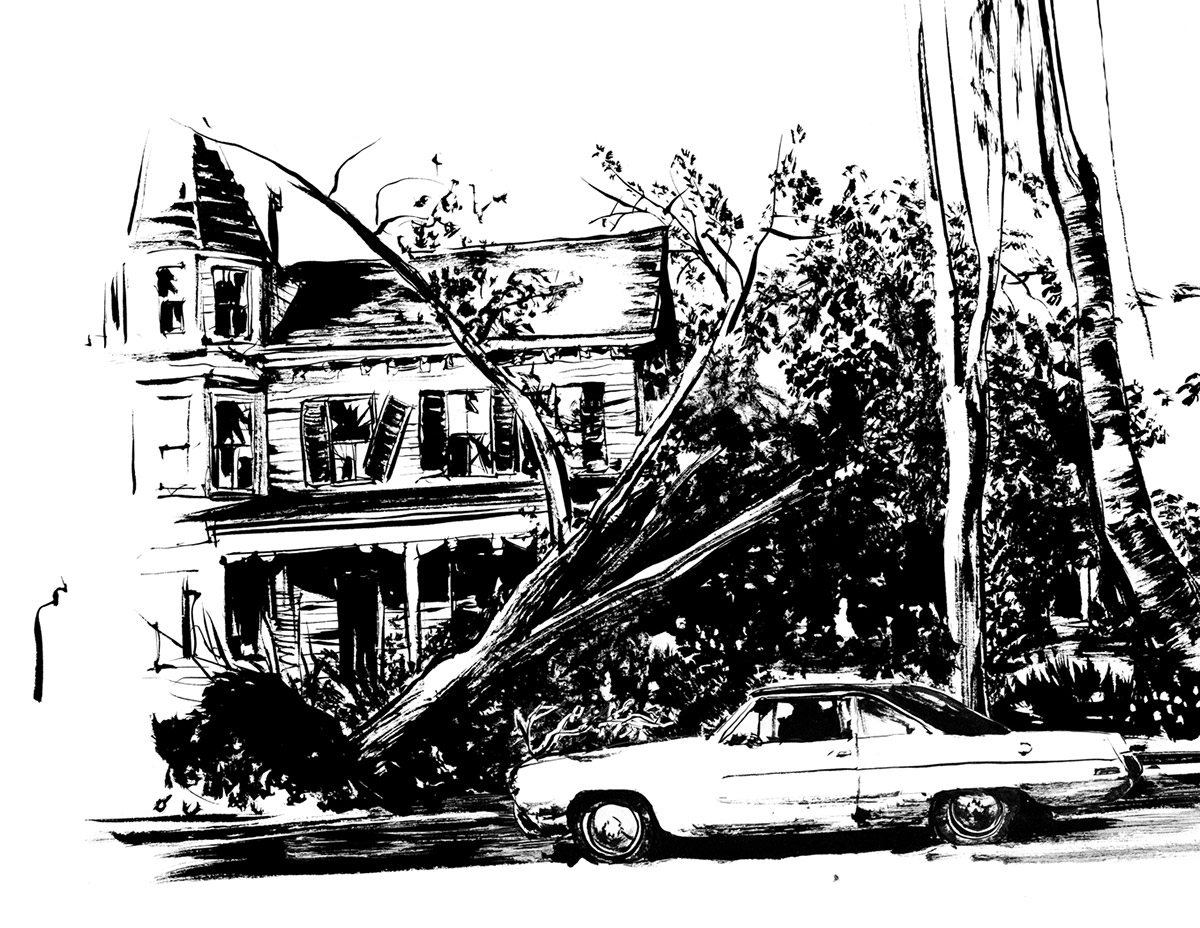
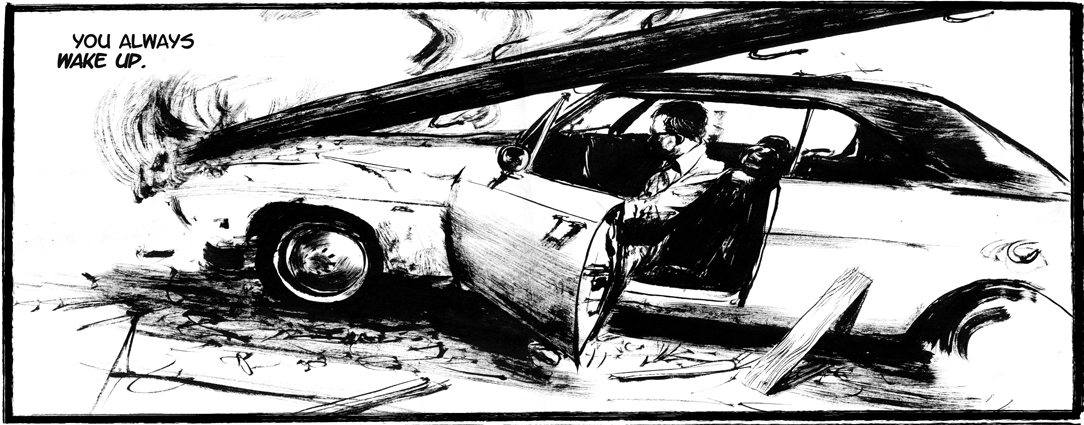
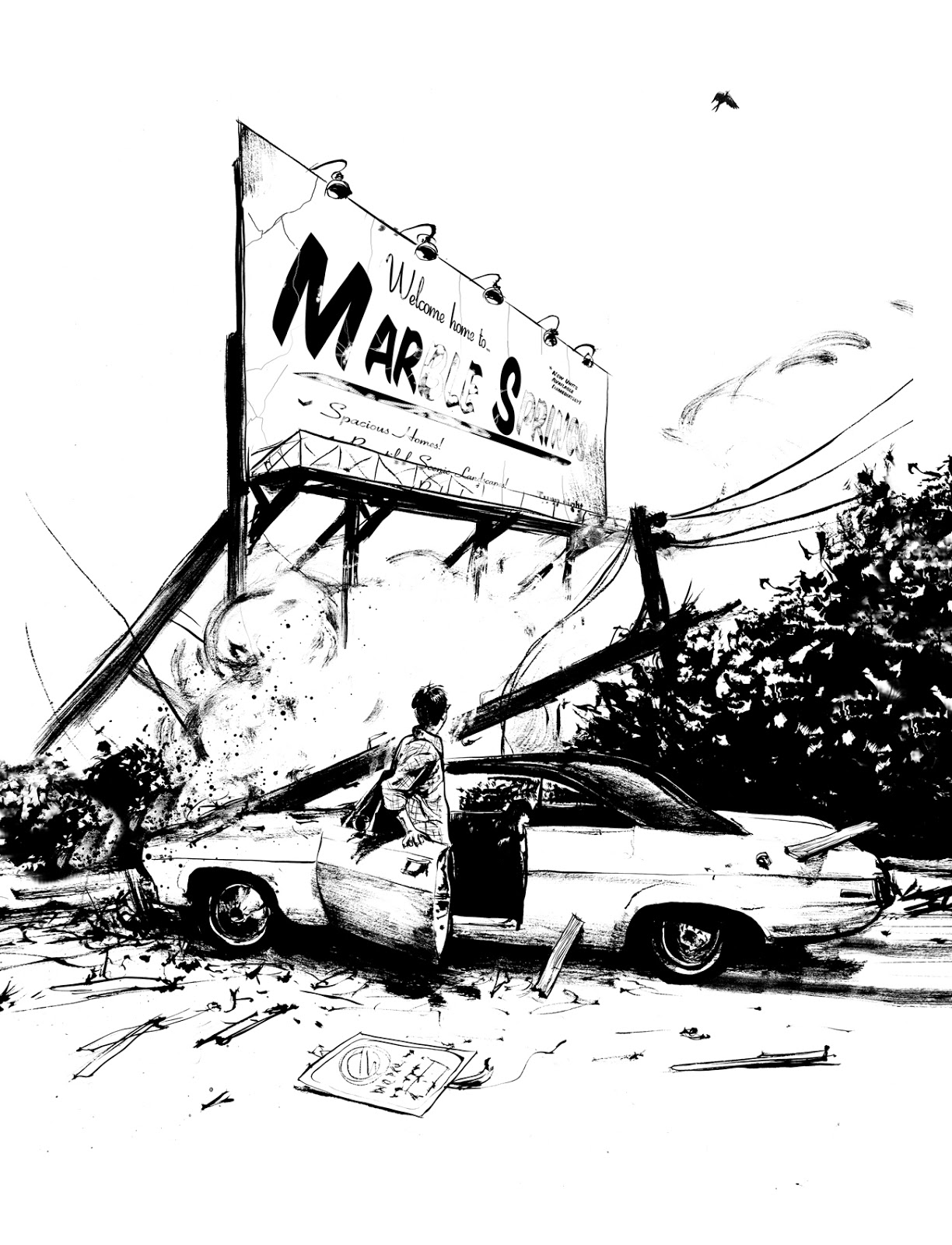

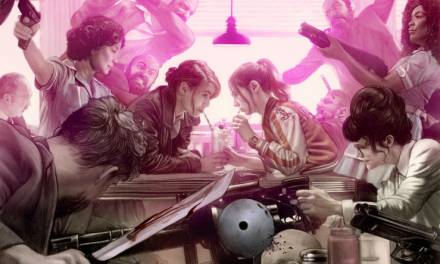
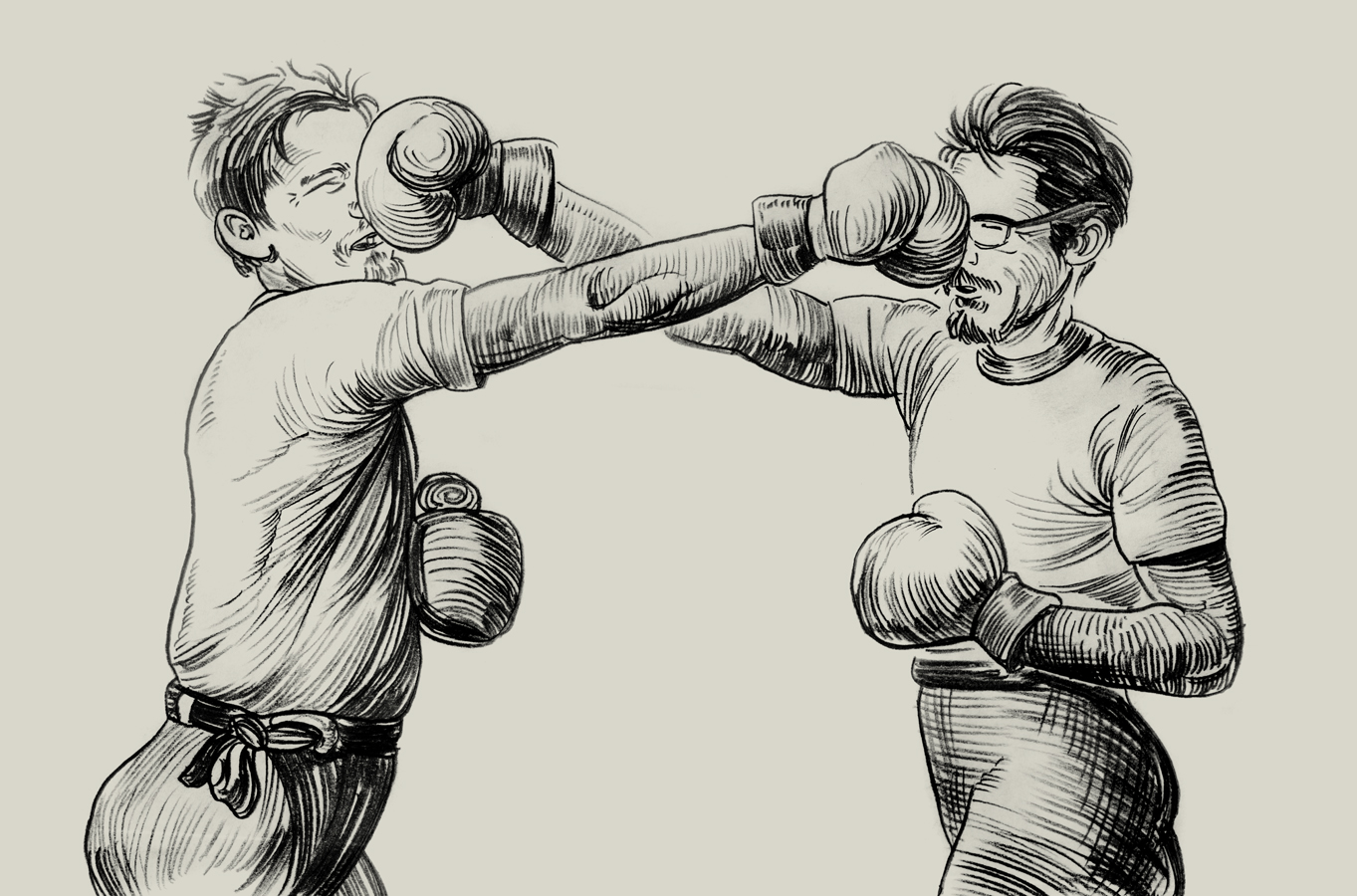

Wow,Stunning Greg.Did you do 100 pages of drawings like these? Brilliant brushwork, compositions and it sounds like an interesting tale as well.Failure is not a word I would even consider. Thanks for sharing
I agree with Brian's comment and thoughts about your work. But I want to add that your articles go so much farther than the physical skill set and experience that goes into each and every work. You're very articulate and genuine and sincere and speak as if you're just sitting across a cafe table sharing your heart. I look forward to your next thesis 🙂
I too worked on a graphic novel that I decided to end. It took about 9 months (with other projects interspersed) to realize I was in the wrong direction. Some factors were similar to those in this article. The emphasis it makes on learning and the positive effect failure has on future work is key. I know if it were not for that I could not have reconciled with ending my project.